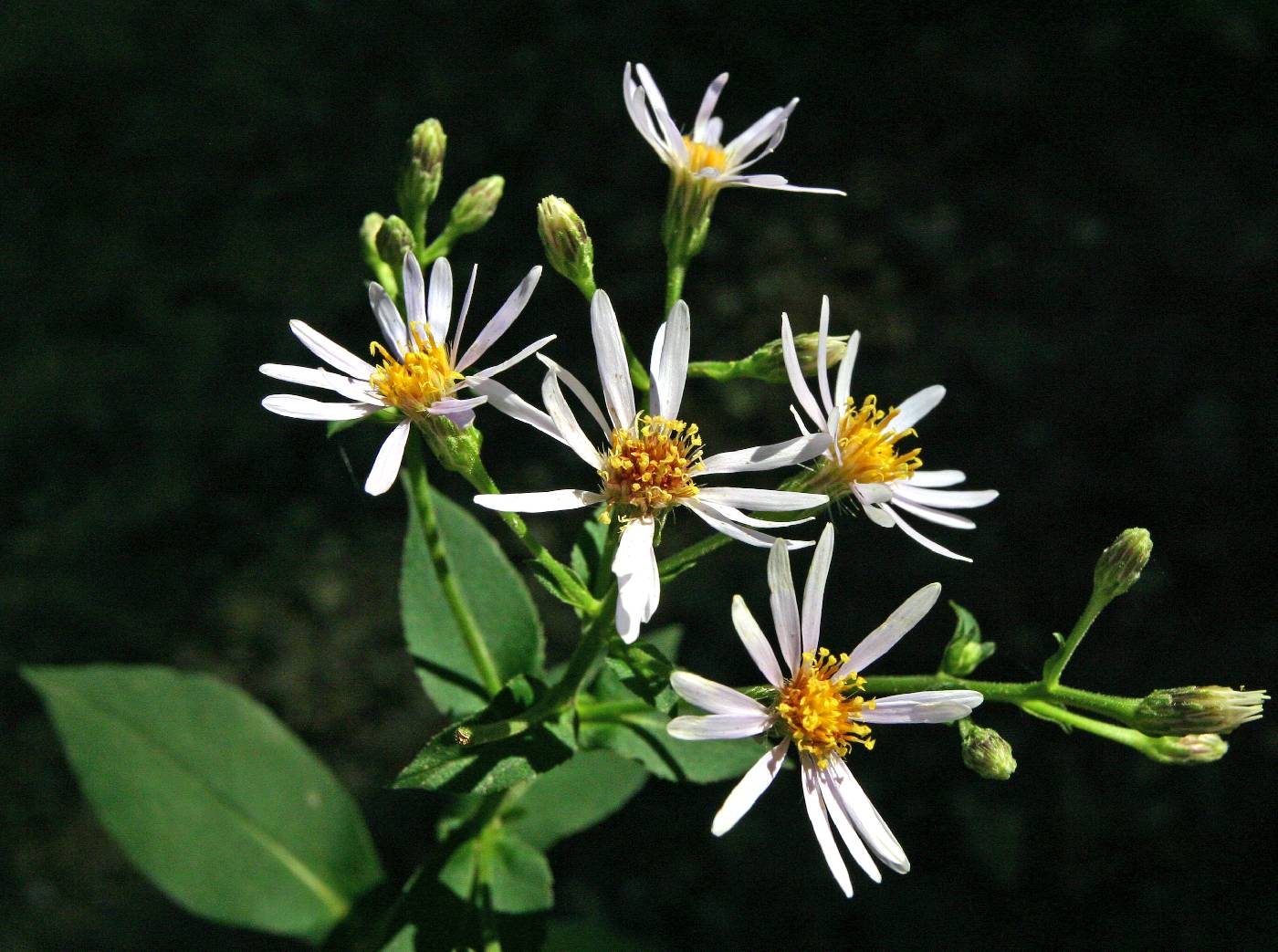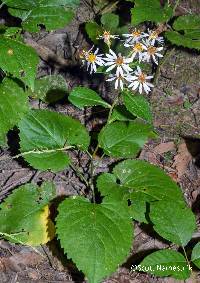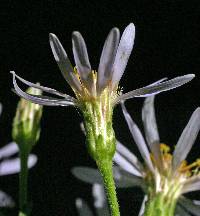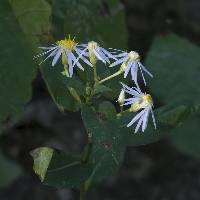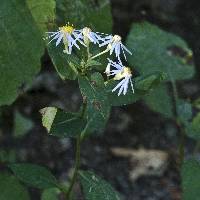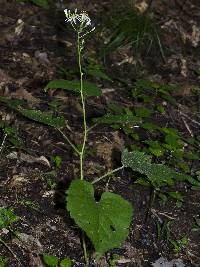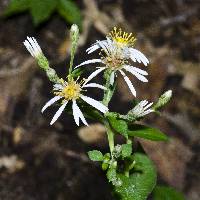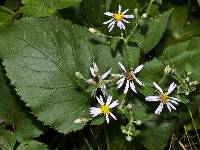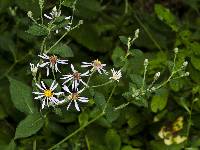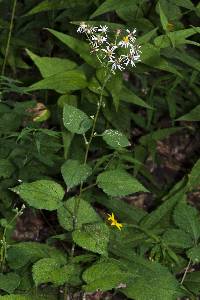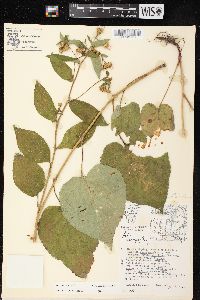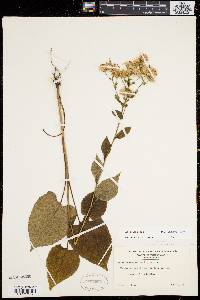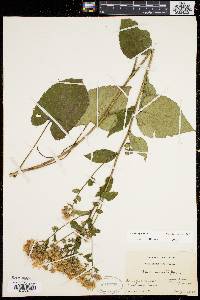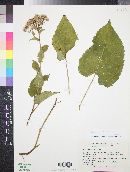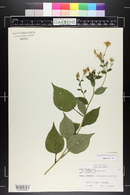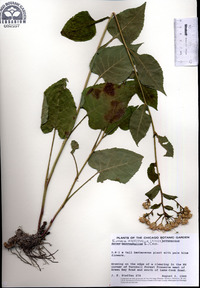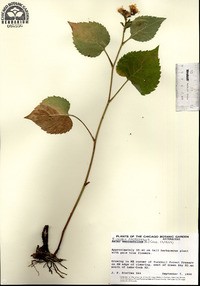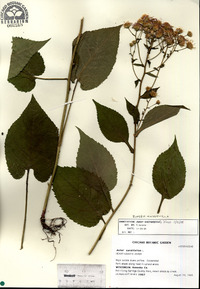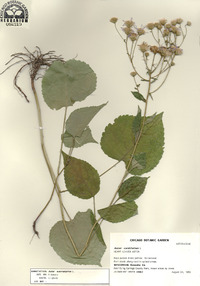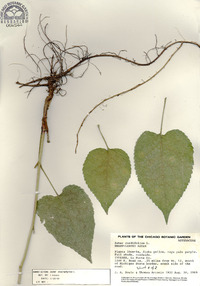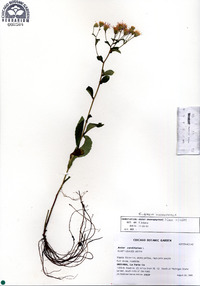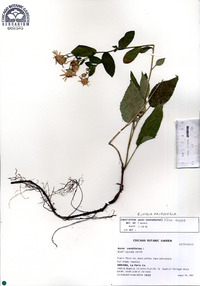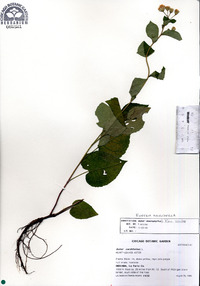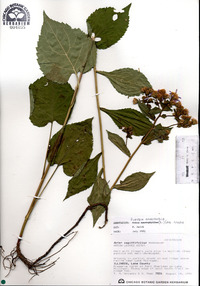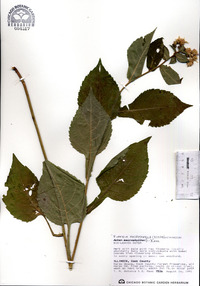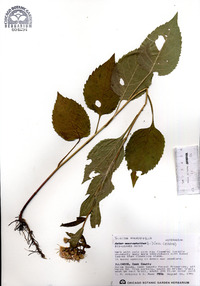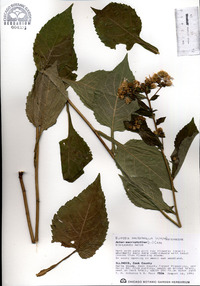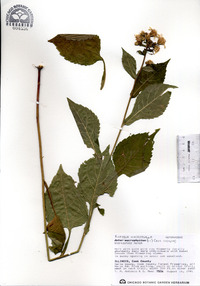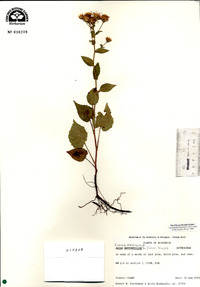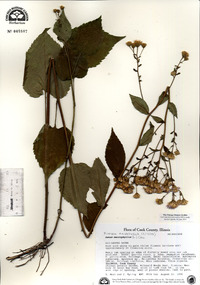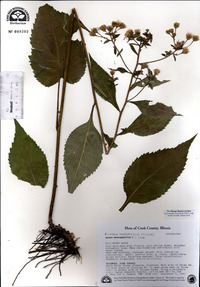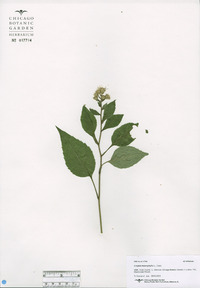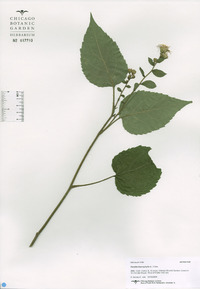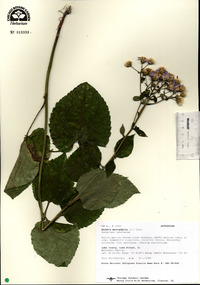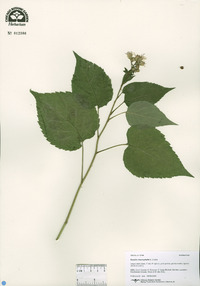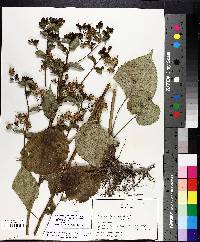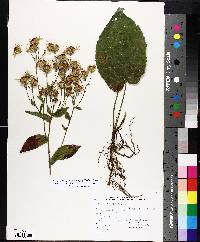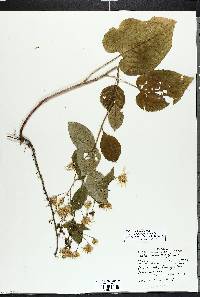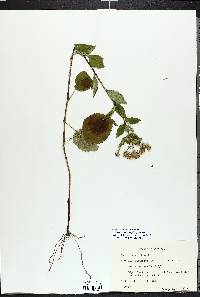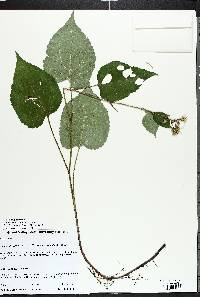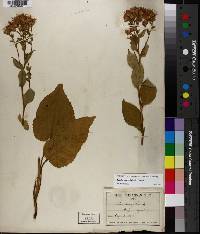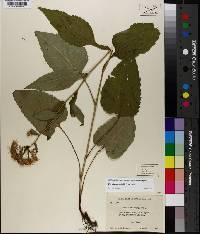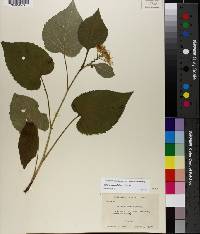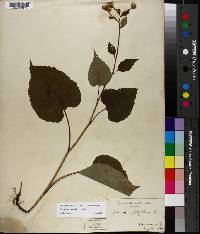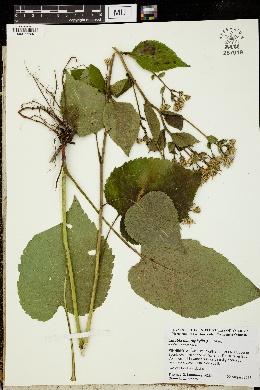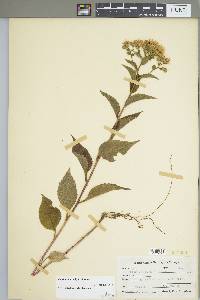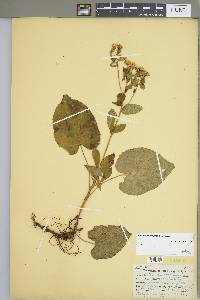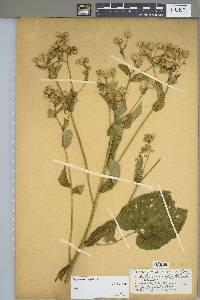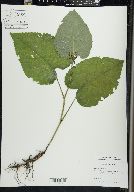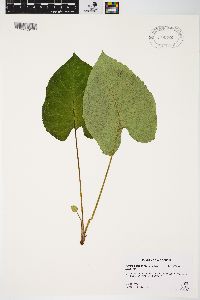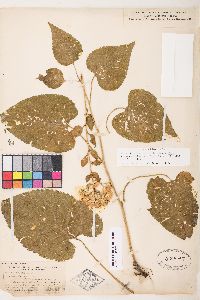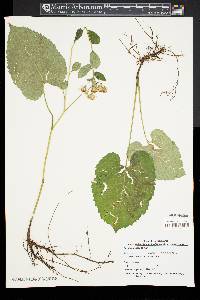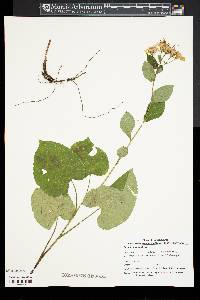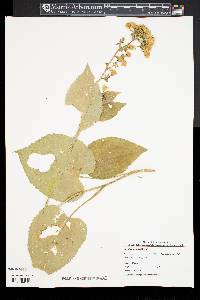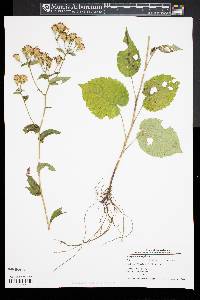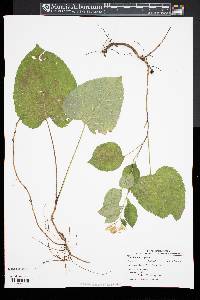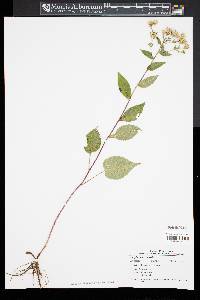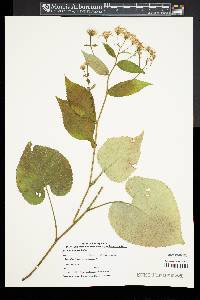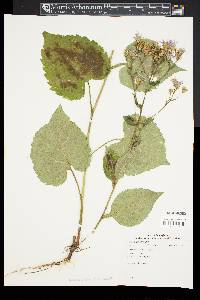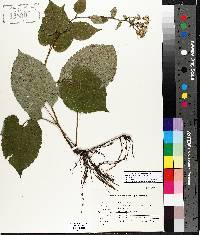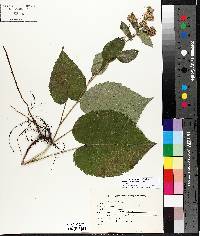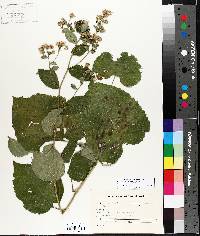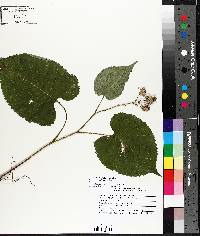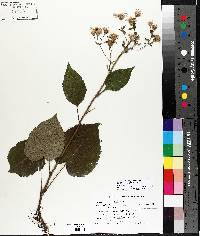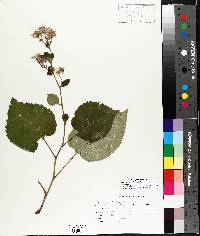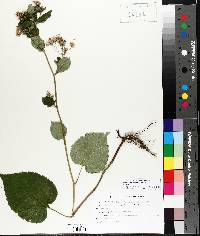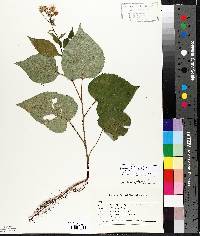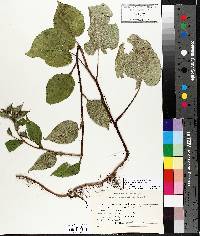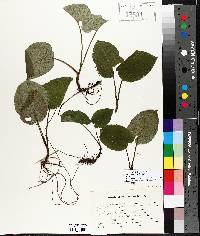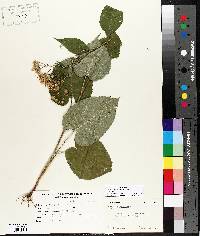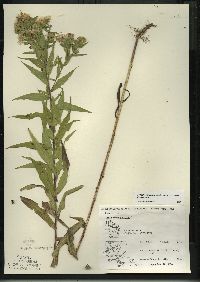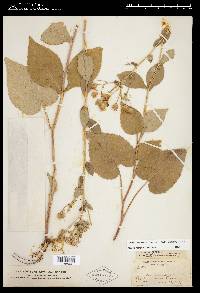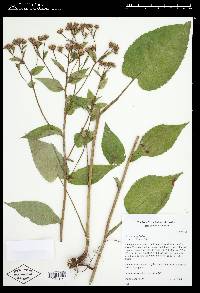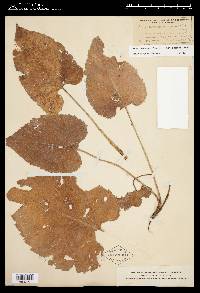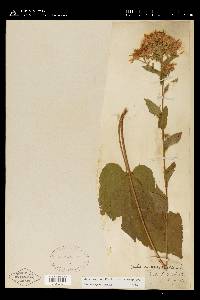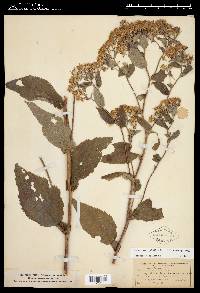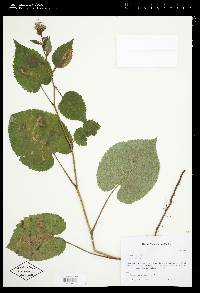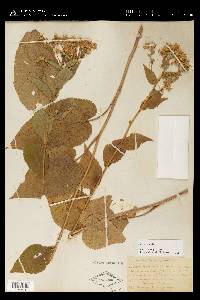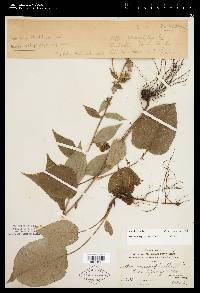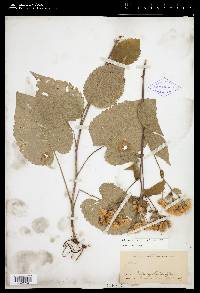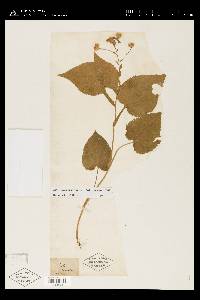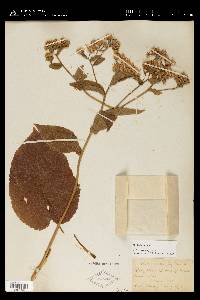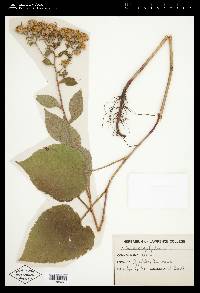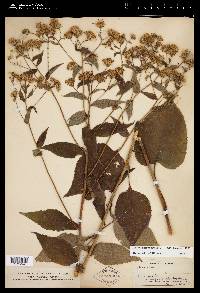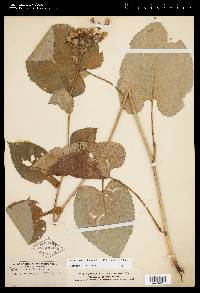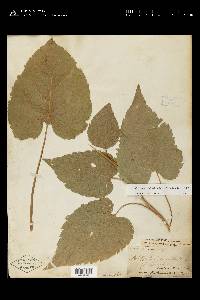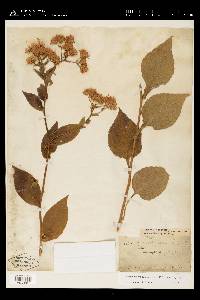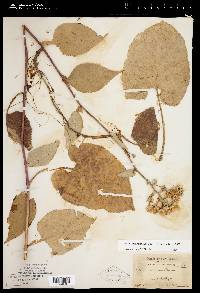Eurybia macrophylla
|
|
|
|
Family: Asteraceae
Large-Leaf Wood-Aster, more...bigleaf aster
[Aster ianthinus Burgess ex Britton & A.Brown, moreAster macrophyllus L., Aster macrophyllus f. eglandulosus Shinners, Aster macrophyllus var. apricensis E.S.Burgess in Britton & A.Br., Aster macrophyllus var. biformis , Aster macrophyllus var. coeruleus , Aster macrophyllus var. excelsior E.S.Burgess in Britton & A.Br., Aster macrophyllus var. ianthinus Fernald in Bissell & L.Andrews, Aster macrophyllus var. macrophyllus , Aster macrophyllus var. pinguifolius E.S.Burgess in Britton & A.Br., Aster macrophyllus var. sejunctus E.S.Burgess in Britton & A.Br., Aster macrophyllus var. velutinus E.S.Burgess in Britton & A.Br., Aster multiformis Burgess ex Britton & A.Brown, Aster nobilis Burgess ex Britton & A.Brown, Aster riciniatus Burgess, Aster roscidus Burgess ex Britton & A.Brown, Aster subcymosus , Aster violaris Burgess ex Britton & A.Brown, Eurybia jussiei , Eurybia jussieui Cass.] |
Plants 15-110 cm; in extensive, dense clones (with abundant, sterile rosettes); rhizomes branched, herbaceous. Stems 1, erect, simple, straight to ± flexuous, glabrous or sparsely villous, stipitate-glandular, more densely so distally (at least in arrays). Leaves basal and cauline, thick, firm, margins coarsely serrate (proximal) to crenate-serrate or entire (distal), scabrous, teeth mucronate, apices acuminate, sharply mucronate, abaxial faces glabrescent to sparsely strigose, veins stipitate-glandular, adaxial sparsely strigose, ± densely villous on veins, short-stipitate-glandular (more so on distal); basal withering by flowering, petioles (25-)80-170 mm, ± winged, bases sheathing, ciliate, blades broadly ovate, (45-)110-250 × (25-)55-150 mm, bases deeply cordate (sinuses curved), sometimes slightly oblique; cauline petiolate (3-110 mm), gradually more broadly winged and sometimes ± auriculate distally, ± clasping, ciliate, to subpetiolate or sessile, blades broadly ovate to ovate, 22-104 × 9-80 mm, gradually reduced distally, bases cordate to rounded or attenuate to cuneate; distal (arrays) sessile, blades ovate or broadly lanceolate or elliptic to obovate or oblanceolate, 9-38 × 3-13 mm, abruptly reduced distally, bases ± clasping to rounded or cuneate (arrays), margins crenate-serrate or entire. Heads (2-)8-90+ in flat-topped, corymbiform arrays. Peduncles firm, 0-4 cm, densely stipitate-glandular; bracts 0-2, ovate-lanceolate, ± stipitate-glandular. Involucres broadly campanulate to campanulate, (6-)7-11 mm, shorter than pappi. Phyllaries 32-35 in 5-6 series, appressed, often purple-tinged, usually obovate to oblong, seldom ovate (outer) to oblanceolate or linear-lanceolate (inner) (innermost to 7 mm), strongly unequal, bases indurate, keeled or rounded adaxially, dark green zones wide, 1 / 3 - 1 / 2 distal portion (rarely to base in outer) to less pronounced along midveins or none (inner), margins hyaline or reddish, scarious, ± erose, densely villoso-ciliate apically, apices obtuse to rounded or acute (inner), adaxial faces ± villous, ± stipitate-glandular. Ray florets 9-20; corollas ± deep lavender or violet to occasionally white, (7-)11-15 × 1.4-2.4 mm. Disc florets 20-40; corollas cream-color or light yellow, becoming purple, 6-7.5 mm, slightly ampliate, tubes (ca. 4 mm) longer than funnelform throats (ca 1.2 mm), lobes reflexed, lanceolate, 1-1.6 mm. Cypse Flowering late summer-early fall (late Aug-Oct). Moist to dry soils, hemlock-northern hardwoods, beech-maple or pine forests, Appalachian spruce-fir forests, aspen, pine or open spruce woodlands, thickets, clearings, shaded roadsides; 0-1300 m; Man., N.B., N.S., Ont., P.E.I., Que.; Conn., Del., D.C., Ga., Ill., Ind., Iowa, Ky., Maine, Md., Mass., Mich., Minn., Mo., N.H., N.J., N.Y., N.C., Ohio, Pa., R.I., Tenn., Vt., Va., W.Va., Wis.; introduced in n Europe. Eurybia macrophylla, a species of the northeastern deciduous or mixed forest, extends north into the southern boreal forest of Ontario-Quebec, and south along the Blue Ridges into northern Georgia. It becomes rare at the western edge of its range (Manitoba, Illinois, Iowa, Missouri). The plant has been reported from Mississippi but no voucher was seen.
Rhizomatous and colonial, 2-12 dm, with abundant clusters of basal lvs on short sterile shoots, glandular at least in the infl, otherwise glabrous or rough-hairy; lvs thick and firm, crenate or serrate with usually mucronulate teeth, the basal and lower cauline ones cordate, 4-30 נ3-20 cm, commonly short-acuminate to obtuse, long-petiolate, the middle and upper gradually or abruptly reduced, becoming sessile and ovate to lanceolate or elliptic; infl corymbiform, its bracts few and broad; invol 7-11 mm, generally glandular, sometimes also short-hairy, its bracts firm, well imbricate, appressed, rounded to sharply acute, the green tip sometimes obscure, the outer 1-2.5 mm wide and not over 2.5 times as long as wide; rays 9-20, 7-15 mm, ±tinged with lilac or purple; 2n=72. Woods; N.S., N.B. and Que. to Wis. and Minn. and se. Man., s. to Pa. and Ky., and in the mts. to Ga. (A. ianthinus; A. multiformis; A. nobilis; A. roscidus; A. violaris) Gleason, Henry A. & Cronquist, Arthur J. 1991. Manual of vascular plants of northeastern United States and adjacent Canada. lxxv + 910 pp. ©The New York Botanical Garden. All rights reserved. Used by permission. From Flora of Indiana (1940) by Charles C. Deam In our northern counties, colonies of this aster are infrequently found in sandy or gravelly soil on black and white oak slopes and in the dune area, at the base of such slopes. In the southern part of the state, I have found large colonies in three counties on black and white oak slopes. It is difficult to explain why it has not been found in other of our southern counties since its habitat apparently exists in many of them. The extreme variability of this species has given rise to the publication of several varieties, three of which have been reported from Indiana. I have studied my specimens rather carefully and have had the species under cultivation for years. I prefer to regard it as a polymorphic species. [Variety ianthinus] is described as having thin leaves and minute glands, these rarely stipitate. I reported it from Clark County. [Variety pinguifolius] is described as having many of the basal leaves very smooth (almost greasy). This form was reported from the dune area. I have a few specimens that have this character. [Variety velutinus] is described as having villous-pubescent stems and leaves pilose beneath, all but the lowest truncate or tapering at the base. This form was reported from the dune area. ...... Indiana Coefficient of Conservatism: C = 7 Wetland Indicator Status: FACU |
|
|
|

